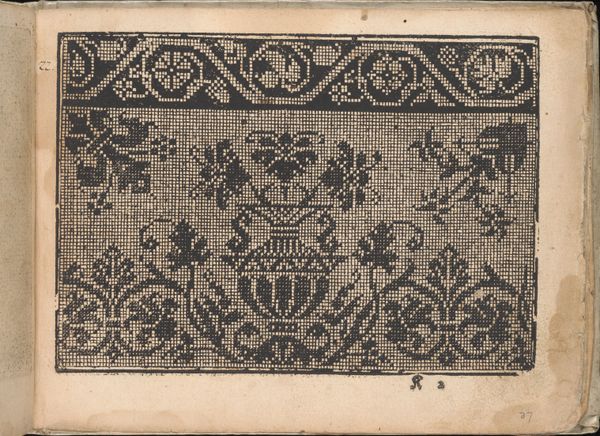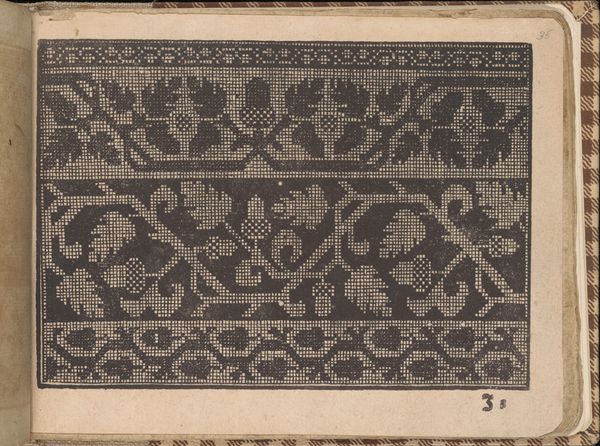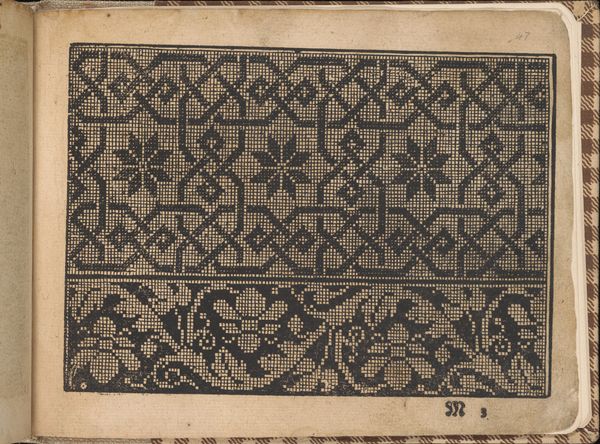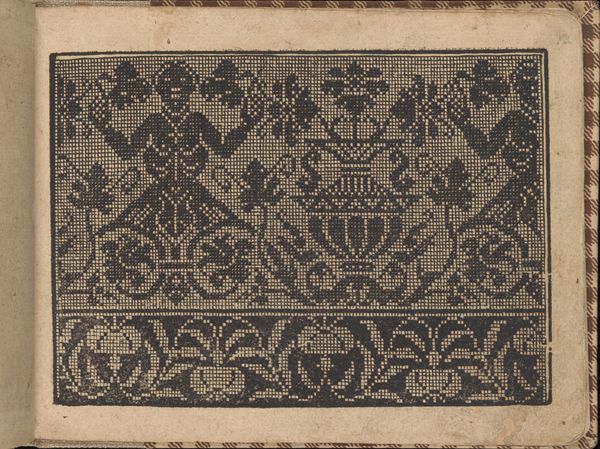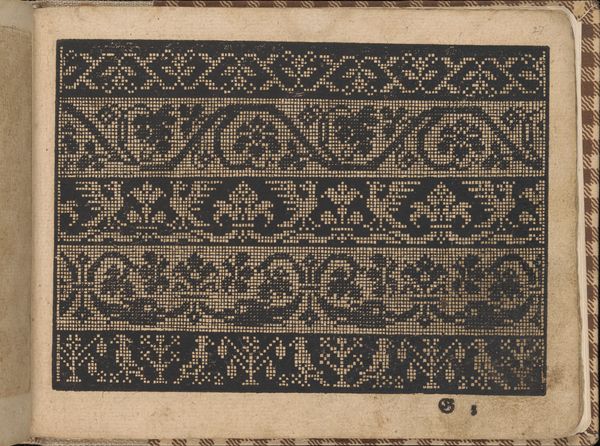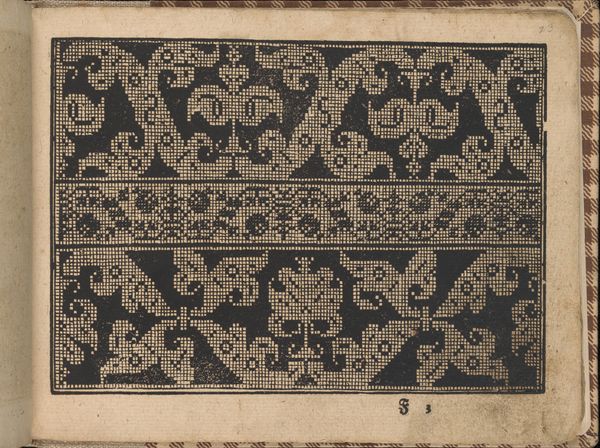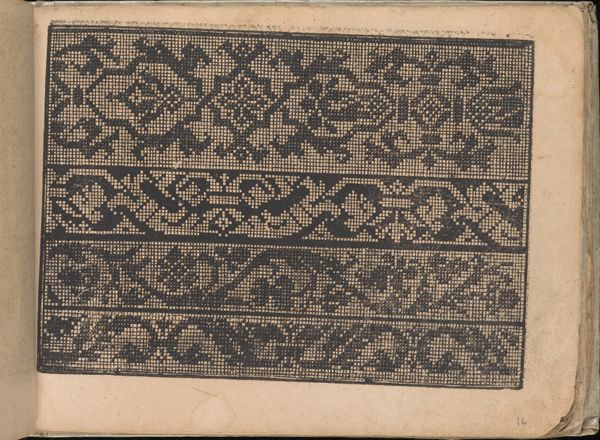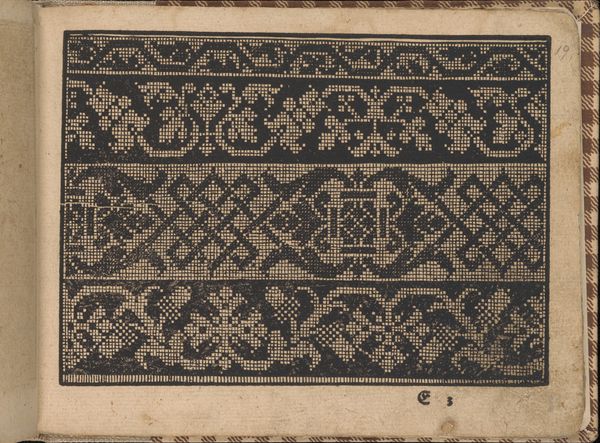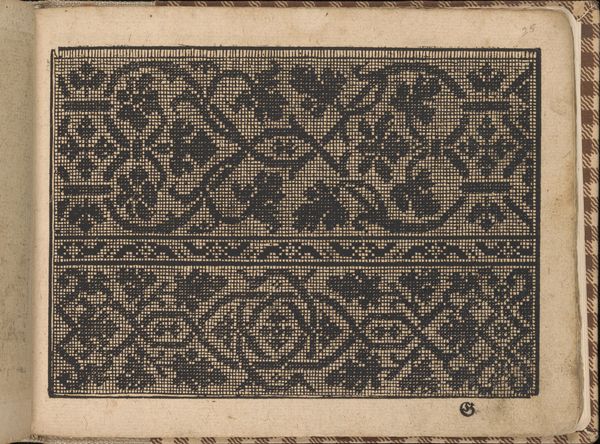
drawing, print, paper, ink
#
drawing
#
medieval
# print
#
book
#
paper
#
ink
#
geometric
#
decorative-art
Dimensions: Overall: 6 5/16 x 8 1/4 in. (16 x 21 cm)
Copyright: Public Domain
Curator: Take a look at this fascinating page from Bernhard Jobin's "New Kůnstlichs Modelbuch," created around 1600. It's a drawing, almost print-like in its precision, rendered in ink on paper. What's your immediate impression? Editor: It feels surprisingly contemporary. The stark black-and-white geometric patterns create a striking visual rhythm. It almost resembles a textile design or some sort of digital rendering, despite its age. Curator: Absolutely. Its rigid composition draws your eye to the precise making; observe how Jobin likely used tools of measurement to manufacture each small segment that is assembled in various motifs that comprise the larger ornamental band. Editor: It brings up a lot of questions about the function of craft and production at this time. Were these pattern books readily available, contributing to a democratization of design in some way? Who had access to this knowledge and how was it circulated? Curator: These books served as guides for artisans, particularly those involved in embroidery and lacemaking, circulating patterns to spread style and visual preferences across geographic divides. This piece reflects both an embrace of craft and of practical artistic labor at a pivotal juncture. Editor: So, it’s more than just aesthetics; it speaks to the labor and societal frameworks involved in the decorative arts, making it less ‘high art’ and more an accessible template. It also brings the gendered element of textiles sharply into focus—much of this labor likely fell to women. Curator: Exactly. And what’s so remarkable is seeing that labor manifest not just in a final embroidered piece, but documented right here at the start of the material transformation in print. Editor: This changes how we might consider ‘artistic’ value too; it invites us to challenge how categories like drawing, decorative art and printing each carry distinctive connotations about who it’s intended for and what ‘type’ of person might be involved in its production and design. Curator: Looking closer at the grid work and symmetrical repetitions reminds me of the contemporary rise of digital art. While our technology differs wildly from 17th-century inks, we are, in a way, both focused on repetition, mechanical manufacturing and the process of transferring an original thought onto an endless arrangement. Editor: In some ways, it brings visibility to the labour and politics in textiles which might otherwise be occluded within questions of artistic authorship. Curator: Yes, "New Kůnstlichs Modelbuch" is a rich material lesson about art as practice, and printing technology itself. Editor: I think engaging with the means through which the work was rendered forces us to examine our own frameworks for evaluating art making and consider what categories continue to prevail and who those frameworks serve.
Comments
No comments
Be the first to comment and join the conversation on the ultimate creative platform.
